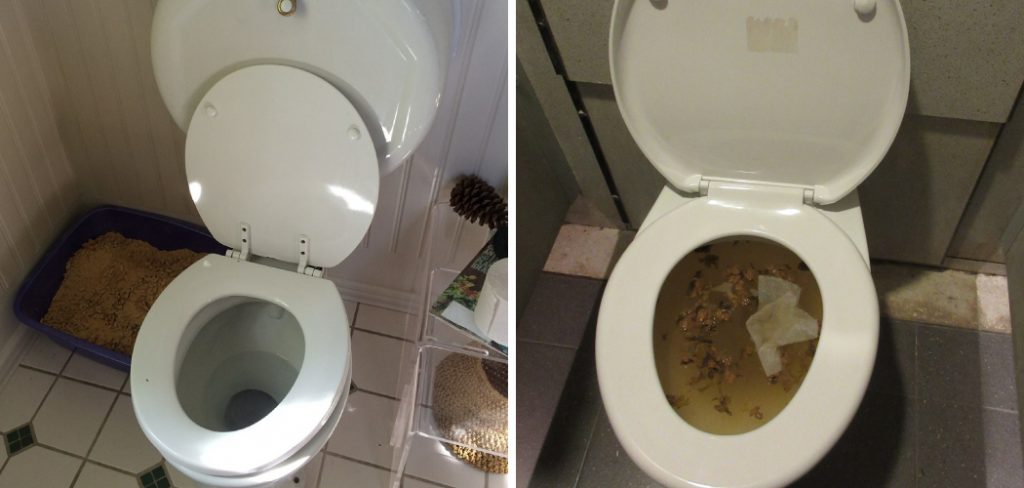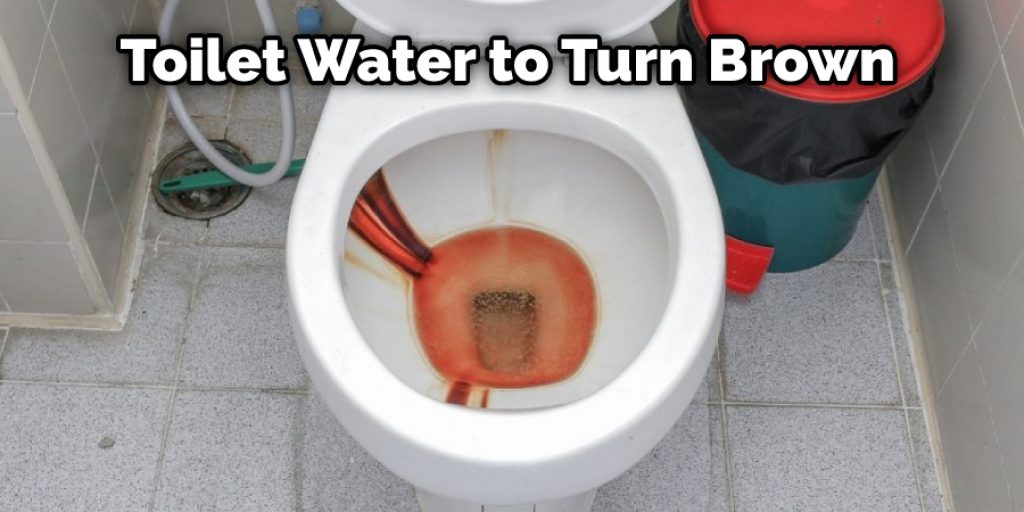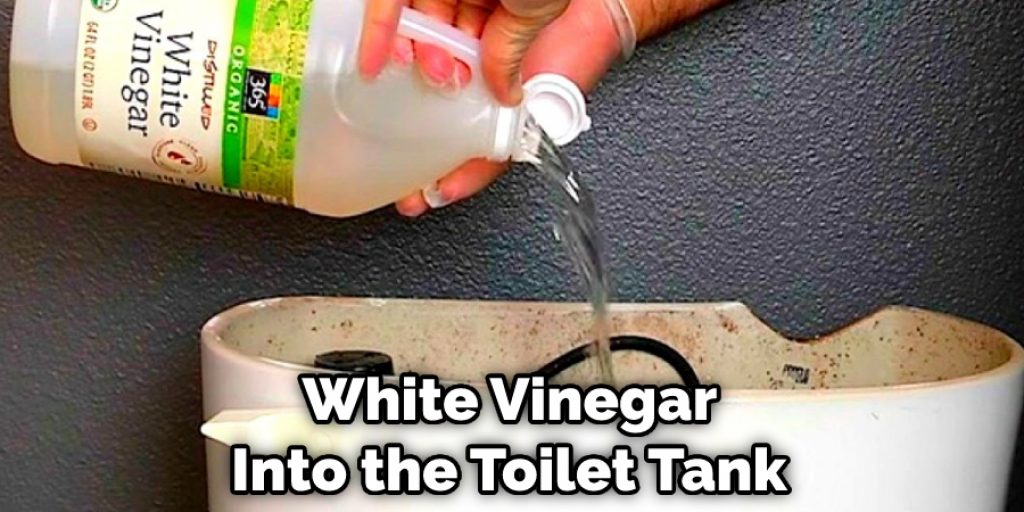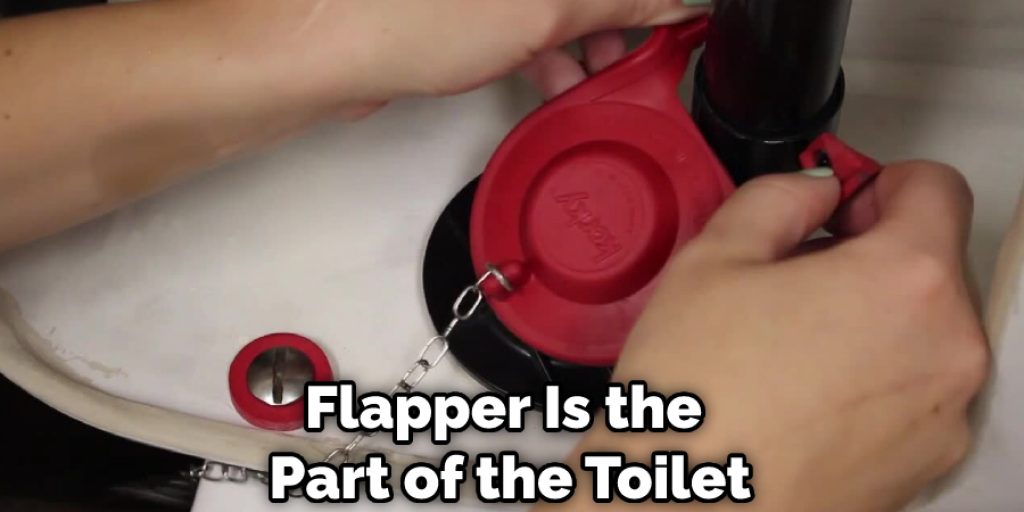When you flush the toilet and the water is brown, it can be alarming. Luckily, there are ways to fix the problem and get your water back to its normal color. In this blog post, we will go over some of the most common causes of how to fix brown toilet water.

When you turn on the faucet, you expect fresh, clean water. However, if your toilet water is brown, it can be disconcerting. Don’t worry there are several things you can do to fix the problem and make sure your toilet water is back to its usual clear color. Keep reading for more information!
Summary: If you notice your toilet water turning brown, there are a few steps you can take to try and remedy it. First, add a quart of white vinegar and let it sit for an hour before flushing the tank with bleach.
Use a plunger if necessary, then check for clogs and inspect the valve and flapper. If all else fails, consider using a water softener or adding baking soda to the tank before using a commercial toilet cleaner.
What Causes Brown Toilet Water?
There are several reasons why your toilet water might be brown. Below we will go over some of the most common causes:
1. Rust:
If your water is rusty, it can cause your toilet water to turn brown. This is because rust is a natural pigment, and when it mixes with water, it can discolor it. If your toilet water is brown, it is important to have it checked out by a plumber to make sure that there is no other problem.
If your toilet is constantly running, you may need to have the flapper replaced. The flapper is the part of the toilet that lifts and allows water to enter the bowl. If it is not functioning properly, it can cause your toilet to run constantly.
2. Mineral Deposits:
If your water is high in minerals, it can cause your toilet water to turn brown. The minerals will deposit themselves in the pipes and eventually make their way to your toilet.
If your home is connected to a well, the brown water may be due to iron deposits in the well. If you have a private well and do not use a water softener, there could be high mineral content in your water.
3. Debris:
If your toilet water turns brown, it could be because there is a lot of debris in your pipes. This can cause a backup, so it’s important to clear it out as soon as possible. To do this, try plunging your toilet and flushing it multiple times. If the debris is still there, you may need to call a plumber.

4. Sewer Gas:
If your sewer line is having problems, it can cause your toilet water to turn brown. This is because the sewer gas can escape and mix with the water in your toilet. If you think this might be the problem, you can call a plumber to inspect your sewer line.
5. Algae:
If there are algae in your water, it can cause your toilet water to turn brown. This is because the algae will eat away at the metal in your plumbing, which can cause discoloration. You can treat algae by using an algaecide or a chlorine tablet. If you don’t want to use any chemicals, you can try a natural solution such as vinegar or bleach.
6. Sediment:
Sediment is often the culprit of brown water in toilets. The sediment can be caused by hard water, high in minerals like calcium and magnesium. To fix this problem, you will need to descale your toilet. This means that you will have to remove the built-up scale from the inside of your toilet bowl. Using a descaling agent or vinegar and baking soda mixture, you can do this.
You Can Check It Out to Fix a Broken Toilet Flange in Concrete Floor
10 Ways on How to Fix Brown Toilet Water
1. Add a Quart of White Vinegar:
This is a cheap and easy way to fix brown toilet water. Pour a quart of white vinegar into the toilet tank and allow it to sit for several hours. The vinegar will help dissolve any build-up or sediment that may be causing the brown coloration.

2. Flush the Tank with Bleach:
If the vinegar doesn’t work, you can try flushing the tank with bleach. Add 1/2 cup of bleach to the toilet tank and let it sit for an hour. Be sure to flush the toilet several times afterward to remove all bleach.
3. Use a Plunger:
If there is sediment or build-up in the toilet tank, it can sometimes be dislodged with a plunger. Splash some water into the bowl and cover the plunger’s head. Put the plunger over the drain hole and plunge up and down a few times. This can help clear the blockage and fix brown toilet water.
4. Check for a Clog:
The most common cause of brown toilet water is a clog in the drain. If you suspect that there may be a clog, try flushing the toilet with a plunger. If the plunger doesn’t work, you may need to use a snake to clear the clog.
5. Check the Valve:
The valve at the bottom of the toilet tank can sometimes become stuck in the open position, which can cause the water to flow continuously and result in brown toilet water. If you suspect that this is the problem, try closing the valve and see if the water stops flowing.
6. Check the Flapper:
The flapper is the part of the toilet that opens and closes to allow water to flow into the bowl. If it becomes stuck in the open position, it can cause the water to flow continuously and result in brown toilet water. Remove the tank lid and look for the flapper to check for a stuck flapper. If it is stuck in the open position, try to push it down with your finger. If it doesn’t move, you may need to replace the flapper.

7. Use a Water Softener:
If you have hard water, it may be causing the brown toilet water. A water softener can help fix this problem by adding sodium to the water, making it less hard. This can help reduce the number of minerals causing the brown water.
8. Add a Cup of Baking Soda:
Another cheap and easy solution is to add a cup of baking soda to the toilet tank. The baking soda will help dissolve any build-up or sediment in the tank, and it will also help to neutralize any unpleasant smells.
9. Try a Commercial Toilet Cleaner:
If the brown water is due to build-up or sediment, a commercial toilet cleaner may be able to fix the problem. These cleaners are designed to dissolve grime and dirt, and they can often be found at your local hardware store.
10. Call a Plumber:
If none of the above solutions work, it may be time to call a plumber. A plumber can help identify the source of the problem and fix it. Hopefully, one of these solutions will help to fix your brown toilet water. If not, be sure to consult a plumber for further assistance.
You Can Check It Out To Fix Gap Between Toilet and Wall
Some Helpful Tips and Suggestions
- Flush the toilet several times. This will help move any built-up sediment or dirt that may be causing the discoloration.
- Try pouring a gallon of white vinegar into the toilet tank. Let it sit for an hour, then flush.
- If neither of those solutions works, you may need to replace the water in the tank.
- If you have a septic system, it’s important to have the tank pumped every few years to keep it running smoothly. Talk to your septic tank service provider for more information.
- Keep a plunger nearby. If the toilet starts to overflow, you can use the plunger to stop the water flow.
- Add a cup of baking soda to the toilet tank every month to help keep it clean and free from odor.
- If you have hard water, consider using a water softener to reduce the number of minerals in the water. This can help to fix the brown water problem.
- If the brown water is only happening occasionally, it may signify that you need to replace the flapper in the toilet tank. To do this, remove the tank lid and look for the flapper. If it is stuck in the open position, try to push it down with your finger. If it doesn’t move, you may need to replace the flapper.
How Do You Fix Dirty Toilet Water?
If your toilet water is brown, you have a few options for how to fix the problem. You can try one of these methods or call a professional to help you. One option is to use chlorine bleach. Pour 1/2 cup of chlorine bleach into the toilet bowl and let it sit for 30 minutes.
Flush the toilet to remove the bleach. Another option is to use a toilet cleaner. Follow the directions on the cleaner to see how much to use. Flush the toilet to remove the cleaner. If these methods do not work, you may need to call a professional to help you fix the problem.
Is Iron in Water Dangerous?
Iron in water is not dangerous, but it can cause problems with your plumbing. Iron can build up over time and clog your pipes. This can cause water to back up into your home or even overflow.
If you have iron in your water, you may consider installing a water softener. A water softener will help to remove the iron from your water. This will help keep your plumbing running smoothly and prevent any problems.

Frequently Asked Questions
Why is My Toilet Water Suddenly Brown?
Brown water might be a sign that your toilet is not flushing properly. There are many factors that can cause this, including clogged pipes and mechanical problems. If you notice brown water constantly or if it’s coming from a specific area in the house, please call an expert to have the problem diagnosed and fixed as soon as possible.
Can You Put Vinegar in Your Toilet Tank?
This is a question that has been asked a lot lately, and unfortunately, the answer is no. Vinegar is not meant to be used in the bathroom and can actually cause some serious damage if it’s flushed down the toilet. Here are some reasons why vinegar shouldn’t be flushed down the toilet:
- Vinegar can corrode metal pipes – This can lead to clogged pipes and even floods.
- Vinegar can damage sewer systems – When vinegar is mixed with wastewater, it forms a toxic sludge that can damage sewage systems and release harmful chemicals into the environment.
- Vinegar can cause blockages in your toilet – When vinegar becomes hardened and settles at the bottom of your toilet, it can form clogs that will require professional help to remove.
- Vinegar can cause acid reflux – Flushing vinegar down the toilet can cause acid reflux, which is a serious medical condition that causes pain and discomfort in the chest.
Why is My Water Brown When I First Turn It on?
One of the most common issues that homeowners experience is brown water. This can be caused by a number of factors, including calcium and magnesium levels being out of balance, heavy metals in the water, or even an incorrect filter installation.
To test for mineral problems, you can use a home testing kit like The Detox Kitchen’s Water pH Test Kit or Berkey’s Home Testing System. If your results show that there are minerals present in excess of what should be there based on your location, then it may be time to replace some parts of your filtration system. In particular, filters designed to remove metals (such as lead) may need to be replaced more often than usual due to high concentrations found in many municipal tap glasses of water today.
Why is the Water in My Toilet Rusty?
Rust is a natural phenomenon that can form on metal when it is exposed to moisture. When the metal becomes wet, it becomes softer and can bend or even break. This is why the water in a toilet can cause rusty water pipes – because the metal is softer and more easily damaged, it will allow rust to form and spread. If you see rusty spots on your water pipes, try to flush the toilet less frequently to reduce the amount of moisture in the area.
Conclusion
Brown toilet water is unsightly and can also be a sign of corrosion and rust in your plumbing. If you’re seeing brown water in your toilet, don’t panic; there are some simple steps you can take to fix the problem and get your bathroom back to normal.
In this blog post, we’ve walked you through the different methods on how to fix brown toilet water. You may be able to fix the problem yourself and avoid an expensive call to a plumber. If you do need help, our team is here to assist you. Thanks for reading!
You May Also Read: How to Fix Standing Water on Concrete Slab
